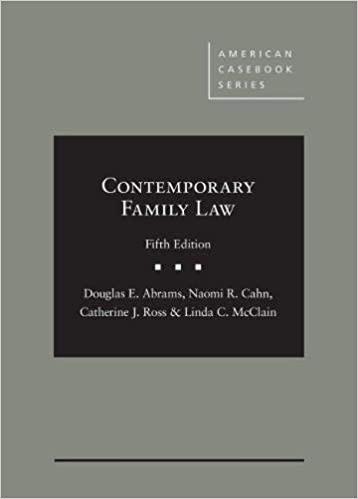Question
Let us pretend that you are the director of monetary affairs for the Fed and you just got authority to pay interest on excess reserves.
Let us pretend that you are the director of monetary affairs for the Fed and you just got authority to pay interest on excess reserves. The initial conditions in the reserve and money markets, before the authority was granted are as follows:
rr = .10
C = 200
D = 4000
ER = 00
b) (4 points) If Rd = 410 - 50 iff, given the information above, what is the market clearing federal funds rate? Show all of your work
Draw a reserve market diagram depicting exactly what is going on here! Label this initial equilibrium point as point A.(10 points for correct and completely labeled diagram)
c) (10 points) So you get this authority and decide, along with the FOMC, that the most appropriate rate to pay on excess reserves would be 25 basis points (0.25%). Given these new conditions, explain what would happen reserve demand and why. You don't need to derive an expression for reserve demand, just explain what would happen to reserve demand and the market clearing federal funds rate and why (be specific and make sure you convey to me that you know how this 'tool' works!) Depict this development on your reserve market diagram and label as point B. Make sure you show how reserve demand is affected and refer to your diagram within your answer.
Let's return to the original conditions before you were granted the authority to pay interest on reserves. Redraw a reserve market diagram locating point A as before. (20 points for correct and completely labeled diagram)
We now experience a shock to reserve demand so that the 'new' reserve demand curve is:
If Rd = 460 - 50 iff
d) (5 points) Solve for the market clearing federal funds rate and label as point B on your diagram
e) (5 points) If the Fed wanted to keep the federal funds rate constant at its value at point A, what type and how many open market operations would the Fed have to conduct? Please label this point as point C on your diagram.
f) (10 points) Now discuss another way, other than open market operations, that the Fed could limit the upward fluctuations of the federal funds rate. For example, suppose the Fed wanted to limit the upward movement of the federal funds rate to 40 basis points (.40%) above the its initial value at point A. Assuming the same shock to reserve demand, what tool could they use to achieve this goal? Please show this point on your diagram as point D.
Step by Step Solution
There are 3 Steps involved in it
Step: 1

Get Instant Access to Expert-Tailored Solutions
See step-by-step solutions with expert insights and AI powered tools for academic success
Step: 2

Step: 3

Ace Your Homework with AI
Get the answers you need in no time with our AI-driven, step-by-step assistance
Get Started


